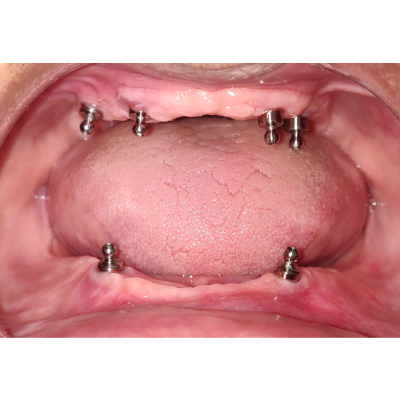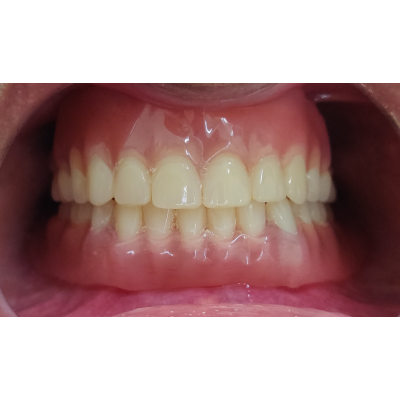Implant Supported Dentures
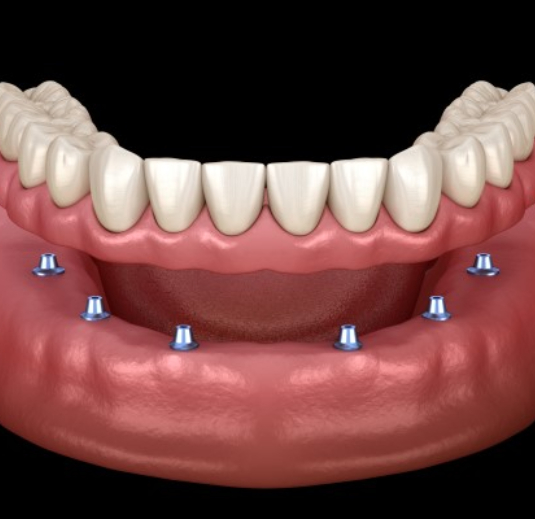
An implant-supported denture is a type of overdenture that is supported by and attached to implants. A regular denture rests on the gums, and is not supported by implants.
An implant-supported denture is used when a person doesn’t have any teeth in the jaw, but has enough bone in the jaw to support implants. An implant-supported denture has special attachments that snap onto attachments on the implants.
Implant-supported dentures usually are made for the lower jaw because regular dentures tend to be less stable there. Usually, a regular denture made to fit an upper jaw is quite stable on its own and doesn’t need the extra support offered by implants. However, you can receive an implant-supported denture in either the upper or lower jaw.
You should remove an implant-supported denture daily to clean the denture and gum area. Just as with regular dentures, you should not sleep with the implant-supported dentures at night. Some people prefer to have fixed (permanent) crown and bridgework in their mouths that can’t be removed. Your dentist will consider your particular needs and preferences when suggesting fixed or removable options.
HOW DOES IT WORK?
There are two types of implant-supported dentures: bar-retained and ball-retained. In both cases, the denture will be made of an acrylic base that will look like gums. Porcelain or acrylic teeth that look like natural teeth are attached to the base. Both types of dentures need at least two implants for support.
Bar-retained dentures
A thin metal bar that follows the curve of your jaw is attached to two to five implants that have been placed in your jawbone. Clips or other types of attachments are fitted to the bar, the denture or both. The denture fits over the bar and is securely clipped into place by the attachments.
Ball-retained dentures
(stud-attachment dentures) — Each implant in the jawbone holds a metal attachment that fits into another attachment on the denture. In most cases, the attachments on the implants are ball-shaped (“male” attachments), and they fit into sockets (“female” attachments) on the denture. In some cases, the denture holds the male attachments and the implants hold the female ones.
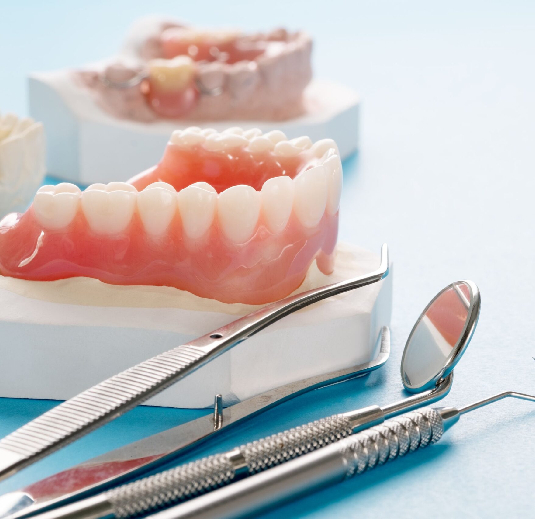
First consult
Before any work is done, you will visit our dentist who has advanced training in the placement and restoration of implants. During the exam, the dentist will review your medical and dental histories, take X-rays and create impressions of your teeth and gums so that models can be made. In some cases, the dentist may order a computed tomography (CT) scan of your mouth.
If you are not already wearing a complete denture to replace your missing teeth, your dentist will make you one. You will use this temporary denture until the implant-supported denture is placed. It will take about four visits, spanning several weeks, to complete this denture. By making this temporary denture, your dentist is able to determine the best position for the teeth in the final denture. The temporary denture also can be used as a backup if something happens to the final implant-supported denture.
Once the temporary denture is finished, the surgeon will use a copy of it as a guide to help place the implants in the proper positions. Holes will be drilled in the copy of the denture so that the surgeon can see where the implants should be placed.
Once the implants have become fused with the bone, the second surgery can be scheduled.
How to take care of your denture?
You will need to remove the denture at night and for cleaning. You also should carefully clean around the attachments. Your dentist will test all the parts of your new denture to see if they are secure. Even though your denture is stable, it still can move slightly when you chew. This slight movement can cause the denture to rub against your gums, which can cause sore spots. Your dentist will check your gums and also will check the way your top and bottom teeth come together (your bite) after insertion of the denture.
The clip or other attachments on the bar-retained denture usually will need to be replaced every 6 to 12 months. They are made of a plastic material (nylon) and will wear after continued use.
Expectations from implant supported over-denture
Your implant-supported denture will be more stable than a regular denture. You will find it easier to speak and you won’t have to worry about the denture becoming loose or falling out of your mouth. You generally will be able to eat foods you could not eat before. However, you will not be able to chew hard or sticky foods because they can damage the denture.
If you have an implant-supported denture in your upper jaw, it can be made to cover less of your palate (roof of your mouth) than a regular denture. That’s because the implants are holding it in place instead of the suction created between the full denture and your palate.
Lower implant supported over-denture
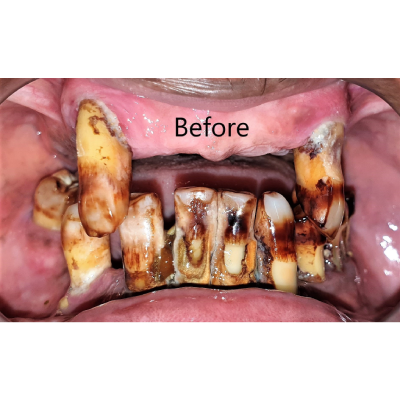
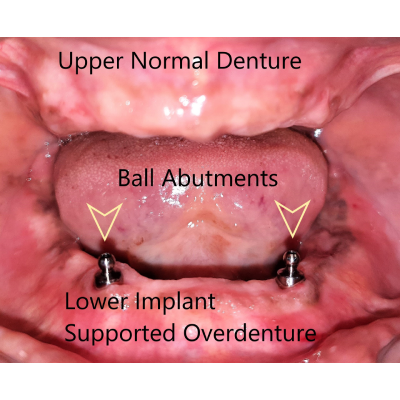
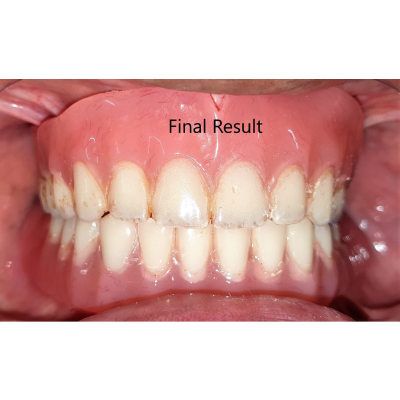
Lower implant supported over-denture

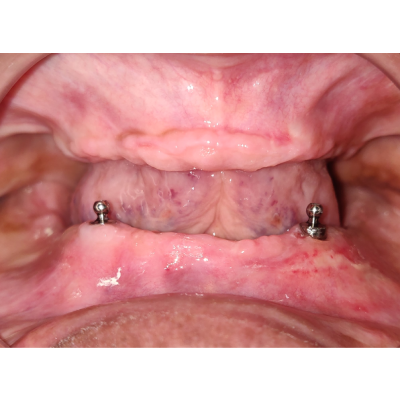
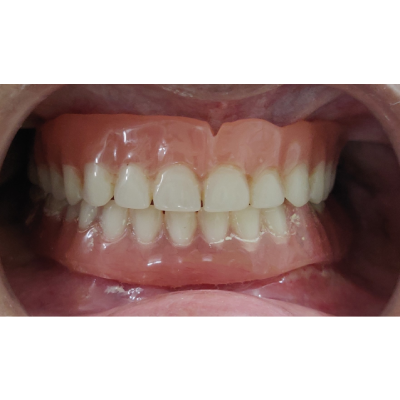
Upper and lower implant supported over-denture

